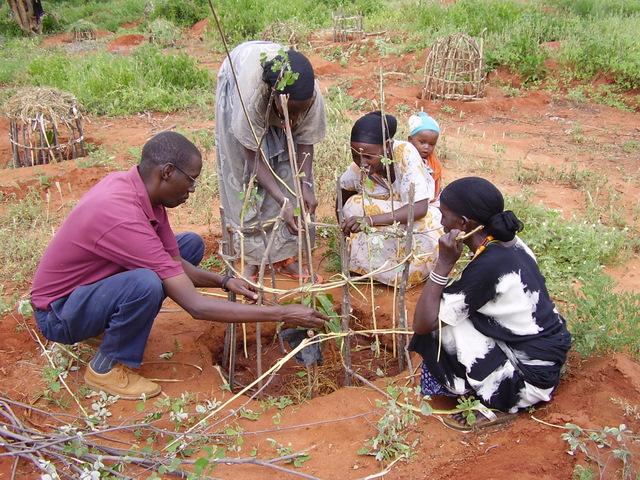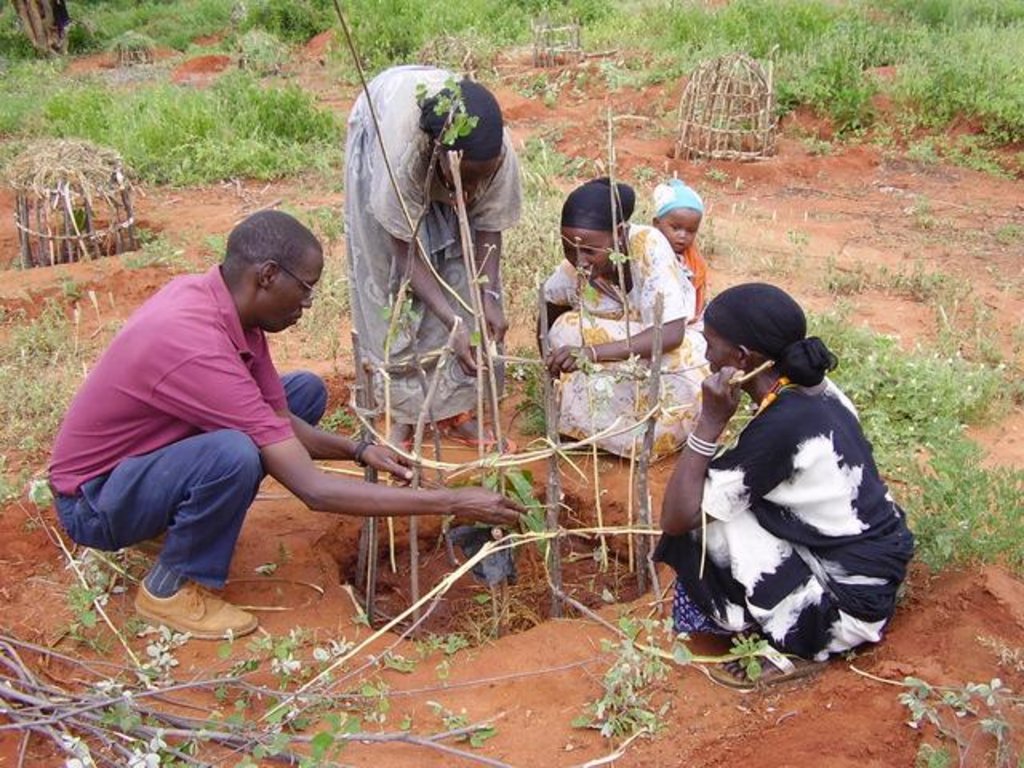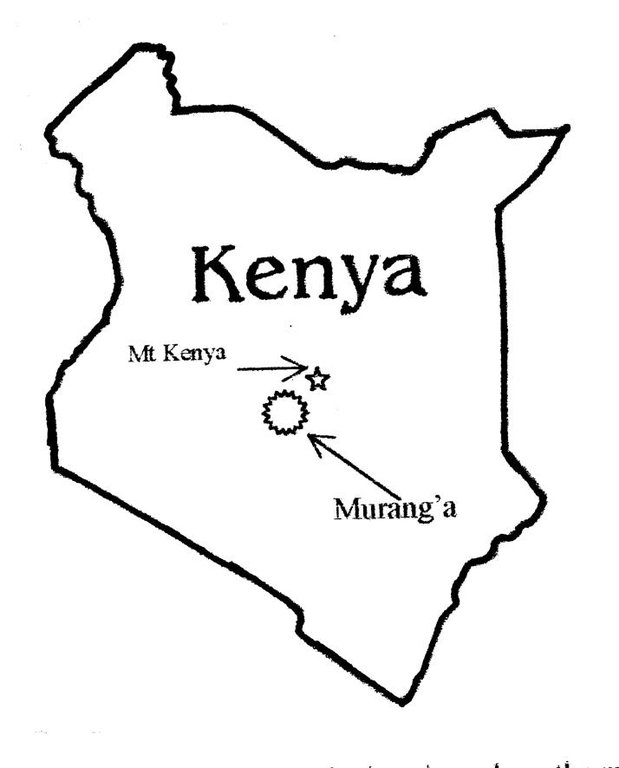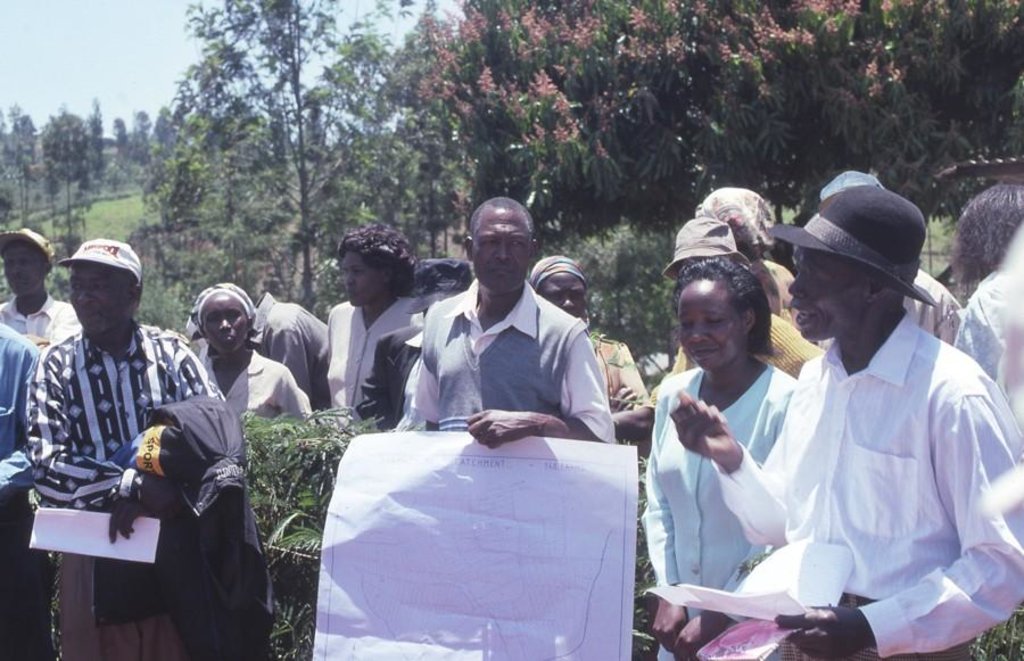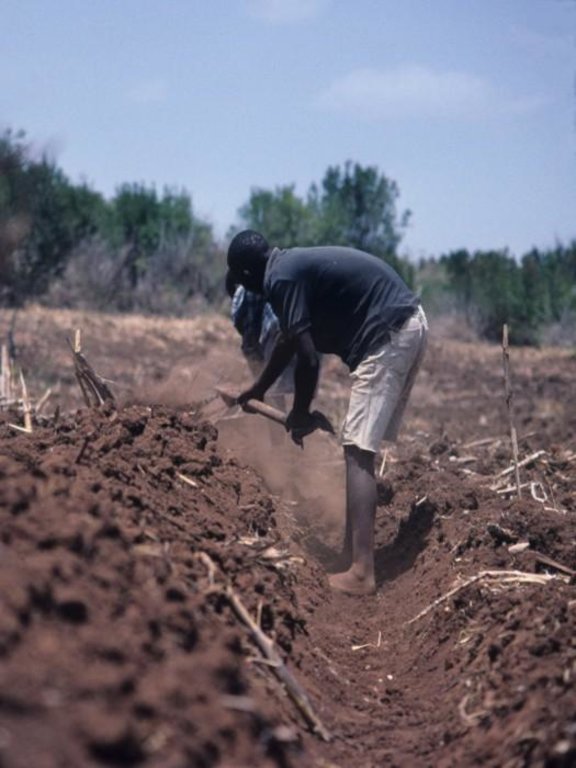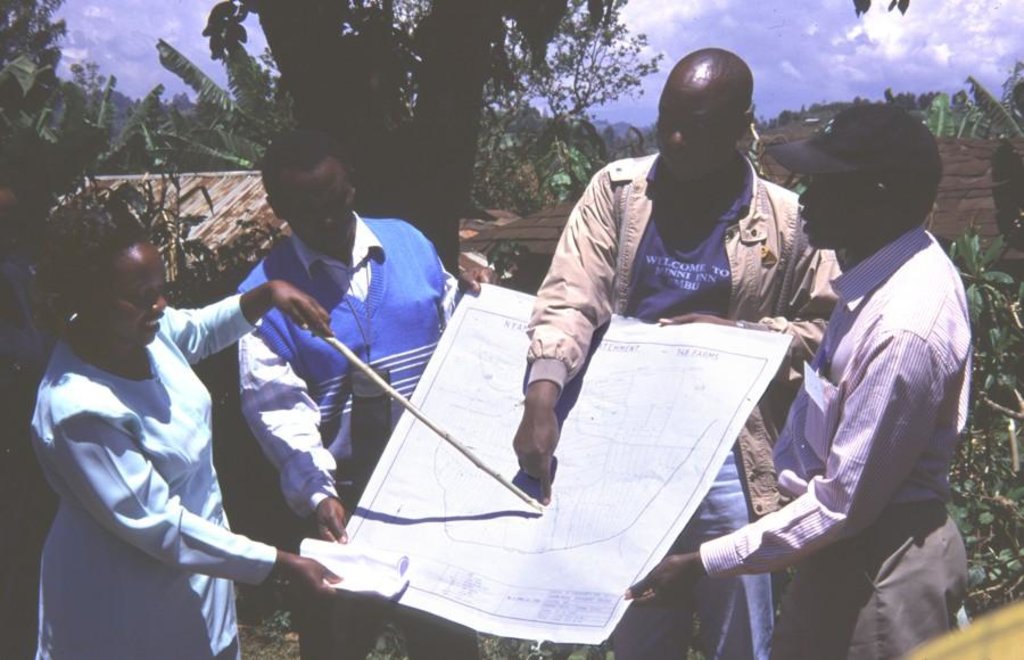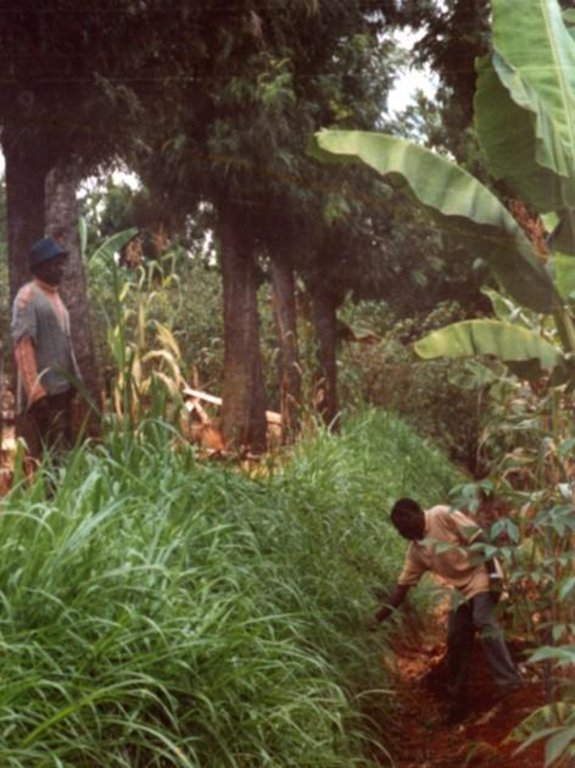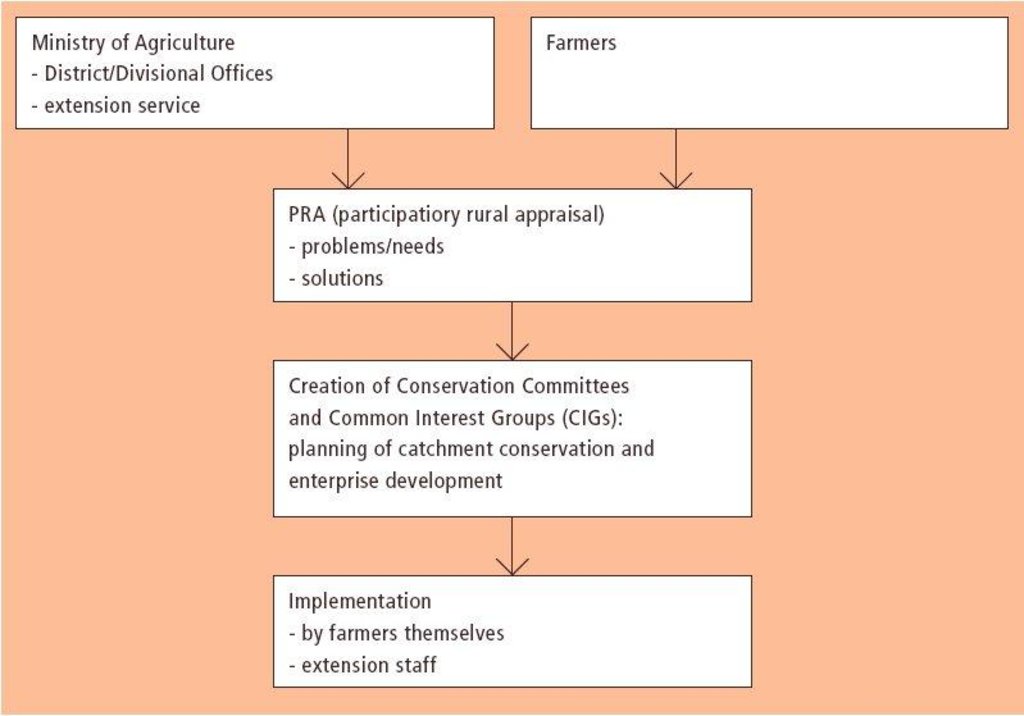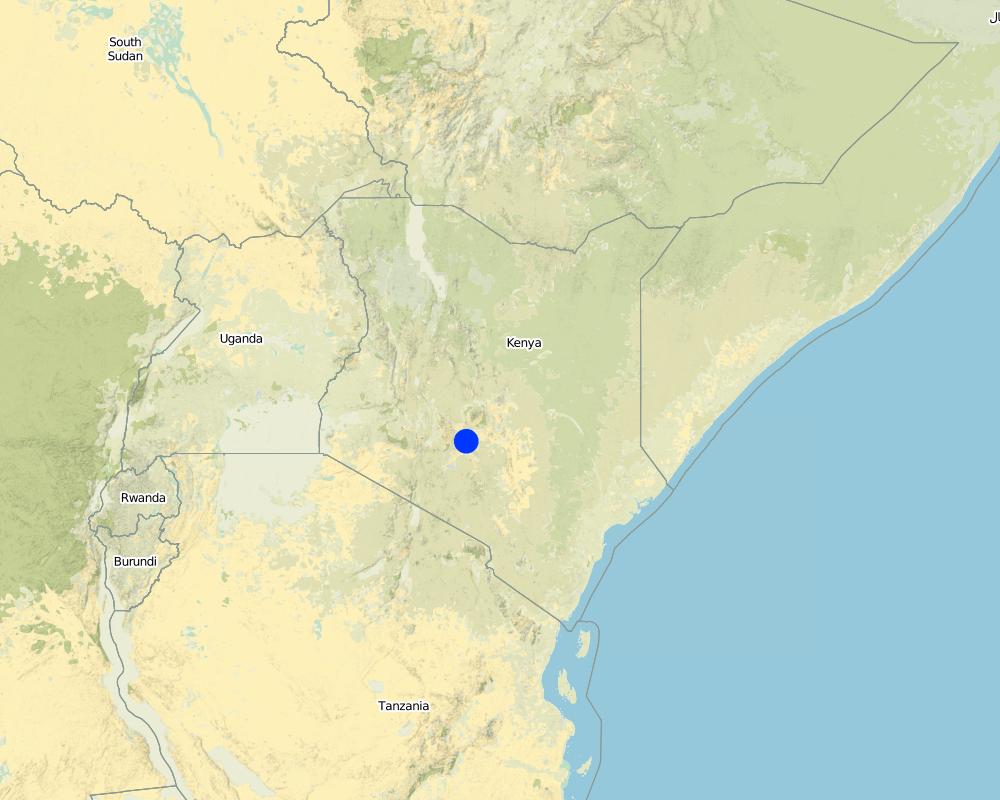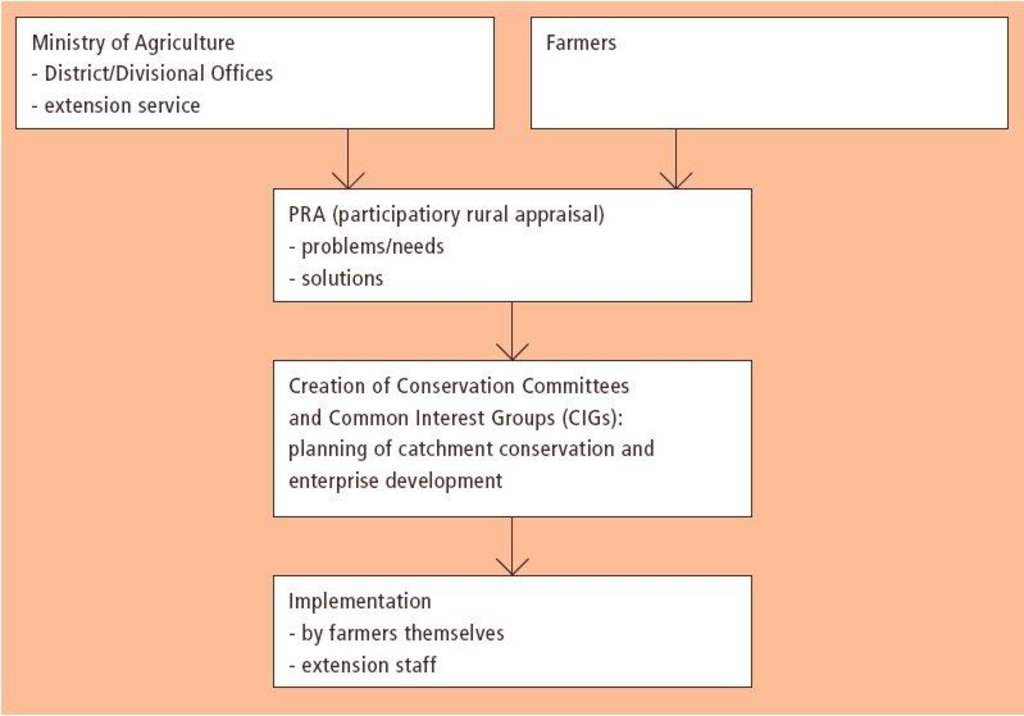Catchment Approach [肯尼亚]
- 创建:
- 更新:
- 编制者: James Gatero Njuki
- 编辑者: –
- 审查者: Fabian Ottiger, Deborah Niggli
approaches_2361 - 肯尼亚
查看章节
全部展开 全部收起1. 一般信息
1.2 参与方法评估和文件编制的资源人员和机构的联系方式
SLM专业人员:
有助于对方法进行记录/评估的项目名称(如相关)
Book project: where the land is greener - Case Studies and Analysis of Soil and Water Conservation Initiatives Worldwide (where the land is greener)有助于对方法进行记录/评估的机构名称(如相关)
FAO Food and Agriculture Organization (FAO Food and Agriculture Organization) - 意大利有助于对方法进行记录/评估的机构名称(如相关)
Ministry of Agriculture, Livestock and Fisheries (MoA) - 肯尼亚1.3 关于使用通过WOCAT记录的数据的条件
编制者和关键资源人员接受有关使用通过WOCAT记录数据的条件。:
是
1.4 SLM技术问卷的参考
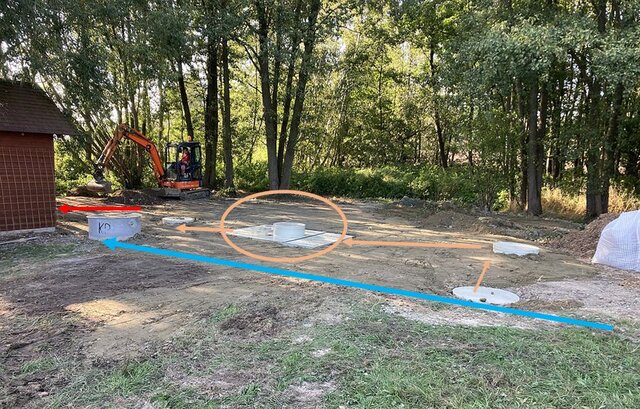
Drainage Biofilter [捷克共和国]
Biofilters or “bioreactors” connected to agricultural tile drains are relatively inexpensive and space-saving measures with considerable potential to improve the quality of drainage water.
- 编制者: Antonín Zajíček
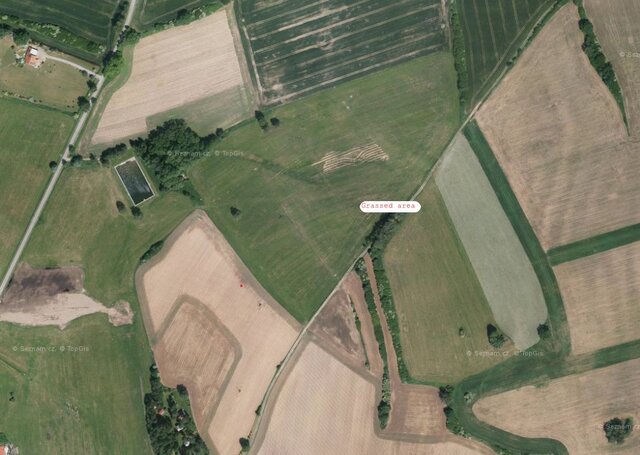
Grassing of Recharge Areas [捷克共和国]
Grassing recharge zones of agricultural drainage systems significantly improves the quality of drainage water. It can be a useful, effective and relatively cheap measure for improvement of shallow groundwater quality.
- 编制者: Antonín Zajíček
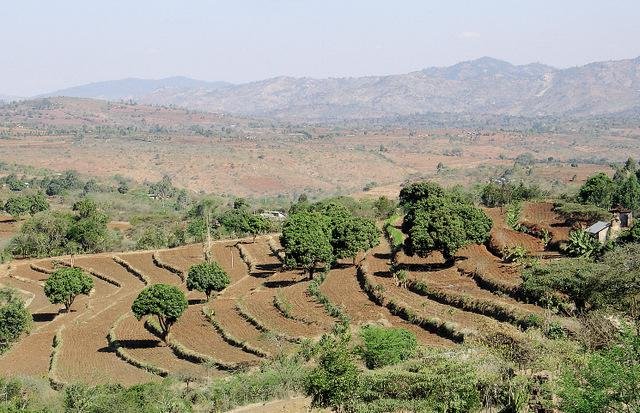
Les terrasses fanya juu [肯尼亚]
Terrasses en talus (remblais) associées à un fossé, le long des courbes de niveau ou selon une douce pente latérale. Le sol est rejeté sur la partie supérieure du fossé pour former le talus, souvent stabilisé par la plantation d’herbes fourragères.
- 编制者: Kithinji Mutunga
2. SLM方法的描述
2.1 该方法的简要说明
A focused approach to integrated land and water management, including soil and water conservation, where the active participation of the villagers - often organised through common interest groups - is central.
2.2 该方法的详细说明
该方法的详细说明:
The catchment approach promotes sustainable land management systems by conservation of a defined area (so-called micro-environments) through the active participation of the communities living there. It was launched in Kenya in 1988 to achieve greater technical and social impact - and at a more rapid pace - than the previous focus on individual farmers. This case focuses on a single catchment in a subhumid area of Central Kenya. The emphasis is on structural measures - especially fanya juu terraces - but vegetative systems are promoted also. Other activities are supported such as spring protection, improved crop and animal husbandry, agroforestry, fodder production, fish ponds and others. The specific objectives are to stimulate the implementation of a variety of SWC measures leading simultaneously to improved production. Each approach area is defined by cultural/administrative boundaries rather than strict hydrological watersheds or catchments (as its name confusingly implies).
A conservation committee is elected from amongst the focal community before problem identification begins. Technical staff from relevant government and non-government agencies (NGOs) are co-opted onto the committee. The approach then involves participatory methods of appraisal and planning of solutions. Land users, together with the co-opted subject matter specialists, pool their knowledge and resources. Common Interest Groups (CIGs) are formed, with the aim of self-help promotion of specific farm enterprises. Training is given to the members of the CIGs by the Ministry of Agriculture. The farmers carry out the majority of the work themselves: monetary or other tangible incentives are few. The end result is the micro-environment (catchment area) conserved for improved production, and left in the hands of the community to maintain and sustain.
The catchment approach was developed under the National Soil and Water Conservation Programme - supported by (Swedish) Sida - and continues to be promoted as the Focal Area Approach (FAA) under the National Agricultural and Livestock Extension Programme (NALEP), which is again supported by Sida. However, under NALEP there is less emphasis on soil and water conservation than the previous programme, and more focus on promotion of productive enterprises.
The catchment approach is linked to cultural or administrative boundaries, rather than to hydrological watersheds. This emphasis on social units and integrated land management is becoming more common worldwide. In Kenya the approach is constantly evolving and has recently been renamed the 'Focal Area Approach'.
2.3 该方法的照片
2.5 采用该方法的国家/地区/地点
国家:
肯尼亚
区域/州/省:
Central Province /Muranga District/Kangema divi
有关地点的进一步说明:
Centre latitude:-0.721 Centre longitude:: 37.156
Map
×2.6 该方法的开始和终止日期
注明开始年份:
1987
终止年份(若不再采用该方法):
2000
2.7 方法的类型
- 基于项目/方案
2.8 该方法的主要目的/目标
The Approach focused mainly on SLM with other activities (The approach also included other activities like energy saving technologies and Agroforestry. It also involved collaboration with othe sectors like public health, fisheries, water. Also new technologies were introduced like water prospecting.) The main aims are to contribute to increased production among farmers and pastrolist through advise on sound land husbandry, conserve agricultural lands affected by erosion, create awareness on importance of soil conservation and introduce on-farm tree planting practices.
The SLM Approach addressed the following problems: lack of tangible and assessable impact of SWC activities, technically or socially, slow implementation of SWC, underlying problems of poverty, declining soil fertility, soil erosion and fuelwood shortage.
2.9 推动或妨碍实施本办法所适用的技术的条件
财务资源和服务的可用性/可得性
- 阻碍
Lack of capital hinders farmers from investing in structures.
Treatment through the SLM Approach: farmers to work in group so that they can pool resources.
机构设置
- 阻碍
There was no institutional linkages to provide synergy
Treatment through the SLM Approach: collaboration forums through PRA were encouraged.
法律框架(土地使用权、土地和水使用权)
- 启动
The existing land ownership, land use rights / water rights moderately helped the approach implementation: Most land is individually owned, so there is no problem in that situation. Where land is rented, land users need to be persuaded to co-operate.
了解SLM,获得技术支持
- 阻碍
Lack of knowledge on better ways of conservation.
Treatment through the SLM Approach: training was carried out through courses, fielddays and demonstration.
3. 相关利益相关者的参与和角色
3.1 该方法涉及的利益相关者及其职责
- 当地土地使用者/当地社区
Working land users were work equally divided between men and women. Groups consist out of both. Many joint activities but men and women still stick to some traditional gender-related agricultural activities. For example women often concentrate on food crops, men on cash crops. The poor resource group has been involved by participating in trainings, in election of catchment committee and during committee meetings.
- SLM专家/农业顾问
- 教师/学龄儿童/学生
- 国家政府(规划者、决策者)
Ministry of Agriculture, politicians
3.2 当地土地使用者/当地社区参与该方法的不同阶段
| 当地土地使用者/当地社区的参与 | 指定参与人员并描述活动 | |
|---|---|---|
| 启动/动机 | 互动 | public meetings; they were involved in making decisions on boundaries. |
| 计划 | 互动 | rapid/participatory rural appraisal, public meetings, interviews/questionnaires; they were involved in providing information during the PRA and also the formulation of the community action plan |
| 实施 | 自我动员 | responsibility for major steps; they were invoved in the actual work in the farms. implemented by community members |
| 监测/评估 | 被动 | Mainly: interviews/questionnaires; partly: reporting; |
| Research | 无 | only during trainings |
3.3 流程图(如可用)
3.4 有关SLM技术选择的决策
具体说明谁有权决定选择要实施的技术:
- 主要是土地使用者,由SLM专家提供支持
解释:
Land user driven (bottom-up). The choice on the technology to use is made primarily by the technical specialists based on the prevalent type of erosion on each farm and farmers preference.
Decisions on the method of implementing the SLM Technology were made by mainly by land users supported by SLM specialists. Land user driven (bottom-up). The method of implementation is decided based on the farmers capabilities and resources at his disposal e.g. where labour is a constraint and finances limiting, biological conservation measures would be considered more.
4. 技术支持、能力建设和知识管理
4.1 能力建设/培训
是否为土地使用者/其他利益相关者提供培训?:
是
明确受训人员:
- 土地使用者
- extensionists/trainers, school children/students (2), teachers (3)
培训形式:
- 在职
- 农民对农民
- 示范区域
- 公开会议
- 课程
涵盖的主题:
including layout of measures; agroforestry; soil erosion and measures to control it; energy conservation; food preservation - as well as for specific farm enterprises. Carried out mainly through farm visits by Ministry of Agriculture agents.
4.2 咨询服务
土地使用者有权使用咨询服务吗?:
是
指明是否提供了咨询服务:
- 在土地使用者的土地上
说明/注释:
Name of method used for advisory service: Catchment Approach: Formation of Conservation Committees. Implementation of techniques/technologies, Training on techniques/technologies, farm visits, field demonstrations, field days.
Advisory service was carried out through: Government's existing extension system (Both generalists and SWC specialists.) Extension staff: Mainly government employees.
Advisory service is quite adequate to ensure the continuation of land conservation activities; There are extension staff posted at locational level who are well trained.
4.3 机构强化(组织发展)
是否通过这种方法建立或加强了机构?:
- 是,适度
具体说明机构的强化或建立程度:
- 本地
具体说明支持类型:
- 能力建设/培训
4.4 监测和评估
监测和评估是该方法的一部分吗?:
是
注释:
bio-physical aspects were regular monitored through observations
technical aspects were ad hoc monitored through measurements
socio-cultural aspects were ad hoc monitored through observations
area treated aspects were regular monitored through observations
no. of land users involved aspects were regular monitored by 0 through measurements; indicators: None
management of Approach aspects were ad hoc monitored by 0 through observations; indicators: None
There were few changes in the Approach as a result of monitoring and evaluation: There have been few changes, but there is some enhanced collaboration between agencies, and - more income generating activities have been identified and implemented through common interest groups for crop production, marketing and livestock.
4.5 研究
研究是该方法的一部分吗?
是
提供进一步的细节,并指出是谁做的研究:
Specific problems are researched as they arise. A strong research-extension linkage is being built up. Monitoring of the progress of the overall programme also takes place.
5. 融资和外部物质支持
5.1 该方法中SLM组成部分的年度预算
如果不知道准确的年度预算,请给出一个范围:
- < 2,000
注释(例如主要的资助来源/主要捐助者):
Approach costs were met by the following donors: international (SIDA/trainnig, transport allowances etc): 70.0%; government (national - Office, personell): 20.0%; local community / land user(s) (Labour, materials): 10.0%
5.3 对特定投入的补贴(包括劳动力)
- 设备
| 具体说明哪些投入得到了补贴 | 程度如何 | 对补贴做出具体说明 |
|---|---|---|
| 工具 | Given to catchment committee for use in catchment | |
- 农业
| 具体说明哪些投入得到了补贴 | 程度如何 | 对补贴做出具体说明 |
|---|---|---|
| 种子 | Tree seeds for group nursery establishment | |
如果土地使用者的劳动力是一项重要的投入,那么是不是:
- 自愿
注释:
All labour is provided on a voluntary basis.
5.4 信用
是否根据SLM活动的方法给予信用值?:
是
对条件(利率、回报等)进行具体说明:
This is not provided directly, though a savings and credit 'stakeholder kitty' revolving fund is being promoted and developed.
6. 影响分析和结论性陈述
6.1 方法的影响
该方法是否帮助土地使用者实施和维护SLM技术?:
- 否
- 是,很少
- 是,中等
- 是,支持力度很大
Intensified use of manures. The land user also adopted the construction of retention ditches. The improvements to SWC are moderate: these have been mainly through fanya juu and level bench terraces
该方法是否改善了阻碍SLM技术实施的土地使用权/用户权问题?:
- 否
- 是,很少
- 是,中等
- 是,支持力度很大
The approach through catchment committee was able to persuade the prople leasing land to undertake conservation measures.
Did other land users / projects adopt the Approach?
- 否
- 是,很少
- 是,中等
- 是,支持力度很大
Spread has been limited to one Non-Governmental Organisation in this particular case study area.
- 否
- 是,很少
- 是,中等
- 是,支持力度很大
6.3 方法活动的可持续性
土地使用者能否维持通过该方法实施的措施(无外部支持的情况下)?:
- 不确定
若否或不确定,请具体说明并予以注释:
Interventions are likely to continue and be maintained, but this depends on common interest groups continuing to function actively.
6.4 该方法的长处/优点
| 土地使用者眼中的长处/优势/机会 |
|---|
| Much improved extension/training - research linkages have been forged (How to sustain/ enhance this strength: Continue focussed training/strengthen research-extension linkage.) |
| New and productive farm enterprises have been promoted under the catchment approach alongside better SWC (How to sustain/ enhance this strength: Continue to introduce/support where appropriate through Common Interest Groups.) |
| 编制者或其他关键资源人员认为的长处/优势/机会 |
|---|
| Genuine community participation has been achieved under this approach (How to sustain/ enhance this strength: Continue with participatory training.) |
| There is evidence of 'ownership' by the community which implies a feeling that what has been achieved is due to communal efforts and belongs to them (How to sustain/ enhance this strength: Further training is more effective when benefits are appreciated in this way.) |
6.5 该方法的弱点/缺点以及克服它们的方法
| 土地使用者认为的弱点/缺点/风险 | 如何克服它们? |
|---|---|
| Lack of material incentives like seeds and fertilizers | Assist the farmers with the credit. |
| 编制者或其他关键资源人员认为的弱点/缺点/风险 | 如何克服它们? |
|---|---|
| In many places there is a lack of availability of inputs | Provide better credit facilities for CIGs/farmers generally. |
| Technologies tend to be implemented uniformly, not site-specifically | SWC practices should be matched to each particular situation, eg structural measures such as fanya juu terraces should be promoted only where necessary, that is where agronomic and vegetative measures do not provide sufficient protection. |
| As yet uncertainty about continuation in specific areas if direct support stops after only one year | Don't abruptly terminate this support after one year: continue approach for at least two or three years in each catchment (approach area). |
| inadequate funding | Increase the funding. |
| Too small an area (of the country) is currently covered by NALEP | More staff required: more effective use of staff. |
7. 参考和链接
7.1 方法/信息来源
- 实地考察、实地调查
- 与土地使用者的访谈
7.2 参考可用出版物
标题、作者、年份、ISBN:
The catchment approach is linked to cultural or administrative boundaries, rather than to hydrological watersheds. This emphasis on social units and integrated land management is becoming more common worldwide. In Kenya the approach is constantly evolving and has recently been renamed the 'Focal Area Approach'.
链接和模块
全部展开 全部收起链接

Drainage Biofilter [捷克共和国]
Biofilters or “bioreactors” connected to agricultural tile drains are relatively inexpensive and space-saving measures with considerable potential to improve the quality of drainage water.
- 编制者: Antonín Zajíček

Grassing of Recharge Areas [捷克共和国]
Grassing recharge zones of agricultural drainage systems significantly improves the quality of drainage water. It can be a useful, effective and relatively cheap measure for improvement of shallow groundwater quality.
- 编制者: Antonín Zajíček

Les terrasses fanya juu [肯尼亚]
Terrasses en talus (remblais) associées à un fossé, le long des courbes de niveau ou selon une douce pente latérale. Le sol est rejeté sur la partie supérieure du fossé pour former le talus, souvent stabilisé par la plantation d’herbes fourragères.
- 编制者: Kithinji Mutunga
模块
无模块


